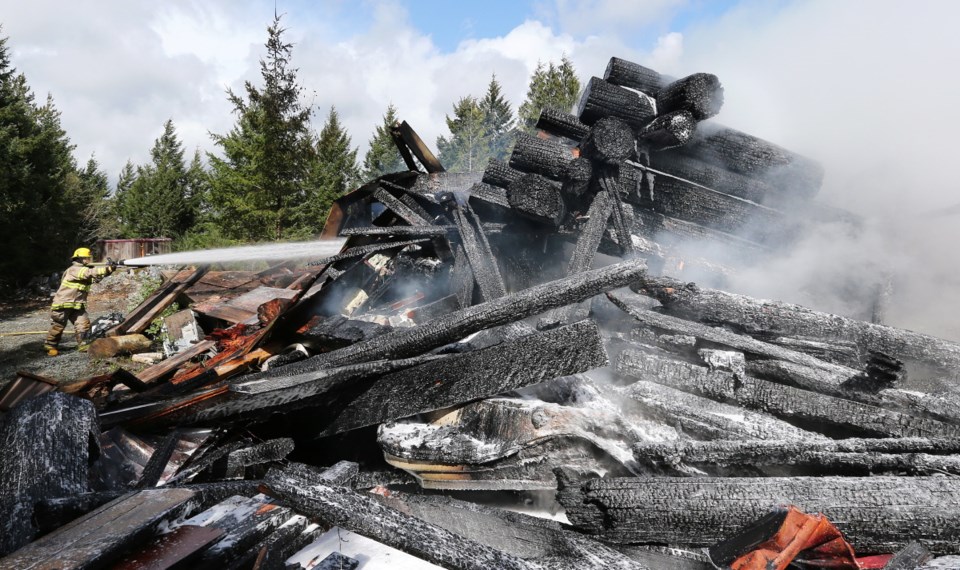East Sooke firefighters were lucky they weren’t inside a burning building when their water supply faltered Saturday, Fire Chief Roger Beck says.
The crew was putting out the fire that consumed former Capital Regional District director Brian Henson’s house on Hensbro Place, when the hoses began going temporarily “dead” every three to four minutes.
“If my firefighters were inside when that happened, hopefully we would have got on to it quick enough and got them out safely,” said Beck.
“But it’s one of those could-be catastrophic problems that I’m glad we found in a fire like this, as opposed to a fire where we were interior attacking.”
The problem was caused by the area’s older water distribution system, which is not yet equipped to deliver “fire flow” pressure, said Ted Robbins, general manager of the Capital Regional District’s integrated water services.
The current system runs through a domestic pump station. It has smaller pipes that can accommodate the amount of water flow needed for showers, dishwashers and other home appliances — but not fire equipment.
The CRD is in the midst of a fire-flow upgrade program, spending about $10 million over five years across the Juan de Fuca water distribution system, which includes East Sooke.
The fire-flow targets for residential areas would deliver about 17.6 gallons (80 litres) a second with a residual pressure of 20 pounds per square inch, Robbins said.
“Until we complete the program, we know we have areas where we cannot provide full [recommended] fire flows all the time,” Robbins said.
But not every fire hydrant in the region will be upgraded.
“It comes down to funding,” Robbins said. “Given the need to meet budget requirements of the overall service, we need to make decisions as to where we can provide the upgrades and where the most value is.”
Robbins said most fire departments are aware of the upgrade program and can accommodate gaps in service through use of their own equipment. But the CRD does not provide maps of which hydrants have fire flow. And while the CRD has models that can provide theoretical information, specific flows fluctuate daily.
It’s up to each department to seek that information, Robbins said.
Colwood, Metchosin and Sooke firefighters are already coming up with their own programs to monitor pressure and flow.
“We’re certainly willing to work with the departments to provide that information,” Robbins said.
Beck said he had never seen the water slow periodically the way it did Saturday.
Water was flowing well when the crew had two 2.5-inch hoses in action. When they opened a third 1.5-inch line, they immediately started losing pressure, Beck said.
“We started juggling trucks around, doing tandem pumping, drawing from a second hydrant to avoid the problem,” Beck said.
Eventually, they brought out portable pumps and a portable tank.
“We would get our pumps to pump water into our trucks and cover the dead time with our portable pumps. It worked well, nobody got hurt. But it’s not really anything they teach you in fire school,” Beck said.



